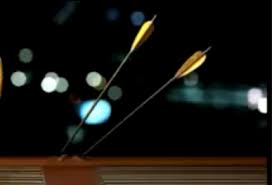
The Norman Conquest
The story of how the nickname of a 12th century Welsh Lord, of French origins, was chosen for an English cider starts with an invasion. It is also the tale of a journey from an arrow in the eye to two arrows thudding into a bar.
In 1066 William the Conqueror led the Norman invasion of England. William was a ‘contender’ for the throne of England as he was the first cousin once removed of the childless King Edward the Confessor. To pursue his claim he built a large fleet and invaded England in September 1066, decisively defeating and killing another contender, Harold, at the Battle of Hastings on 14th October.
After a number of other smaller battles, William was crowned king on Christmas Day, in London.
In the following years, the Normans introduced many changes and the drinking of cider was one of them. The popularity of cider grew steadily; new varieties of apples were introduced, and cider began to figure in the tax records. By 1300, there are references to cider production in the counties now known as Buckinghamshire, Devonshire, Essex, Gloucestershire, Herefordshire, Worcestershire, Kent, Norfolk, Somerset, Suffolk, Surrey and Sussex.
Cider was soon produced on just about any farm that had a few cider apple trees and by the 18th century it was customary to pay part of a farm labourer’s wage in cider. A typical allowance would be 3 – 4 pints per day.
However, in the post-industrial 20th century, cider, while still widely drunk, had become somewhat negatively associated with “yokels” (poorly educated and unsophisticated people from the countryside) and as a drink for the very young and ‘the ladies’. The latter was a result of the fact that many ciders were sweeter than beers and lagers and so were perceived to be more accessible to the young and women)
So when, nearly 100 years after that Norman invasion, H.P Bulmer developed a new dry cider that would be marketed as “the strong cider for men”, they wanted a name that would reinforce this masculine positioning and help provide a back story for what was going to be a new brand in an old category.
Their researches led them to Richard de Clare (1130 – 1176) a Cambro-Norman lord, 2nd Earl of Pembroke, Lord of Leinster and Justiciar of Ireland. He was famous for his leading role in the Norman invasion of Ireland and had gained the nickname “Strongbow” for his reliance on Welsh archers during those campaigns.
The brand became Strongbow.
 The original Norman archer logo that went with the new name was designed by artist Barney Bubbles. Barney Bubbles (born Colin Fulcher) was a radical English artist whose work encompassed graphic design and music video direction. He is in fact best known for his later association with the British independent music scene of the 1970s and 1980s and artists such as Ian Dury & the Blockheads, Elvis Costello and The Damned. His record sleeves for them are amongst his most recognisable output, though in reality possibly more people saw and would recognise his work for Strongbow and Bulmers.
The original Norman archer logo that went with the new name was designed by artist Barney Bubbles. Barney Bubbles (born Colin Fulcher) was a radical English artist whose work encompassed graphic design and music video direction. He is in fact best known for his later association with the British independent music scene of the 1970s and 1980s and artists such as Ian Dury & the Blockheads, Elvis Costello and The Damned. His record sleeves for them are amongst his most recognisable output, though in reality possibly more people saw and would recognise his work for Strongbow and Bulmers.
The strong masculine imagery was then further reinforced in the brands’s advertising when, towards the end of the ads, two arrows would thud into a bar counter near a glass of glistening Strongbow cider.
Cider has come a long way since an arrow in the eye killed Harold! Strongbow is now the largest cider brand in the world.